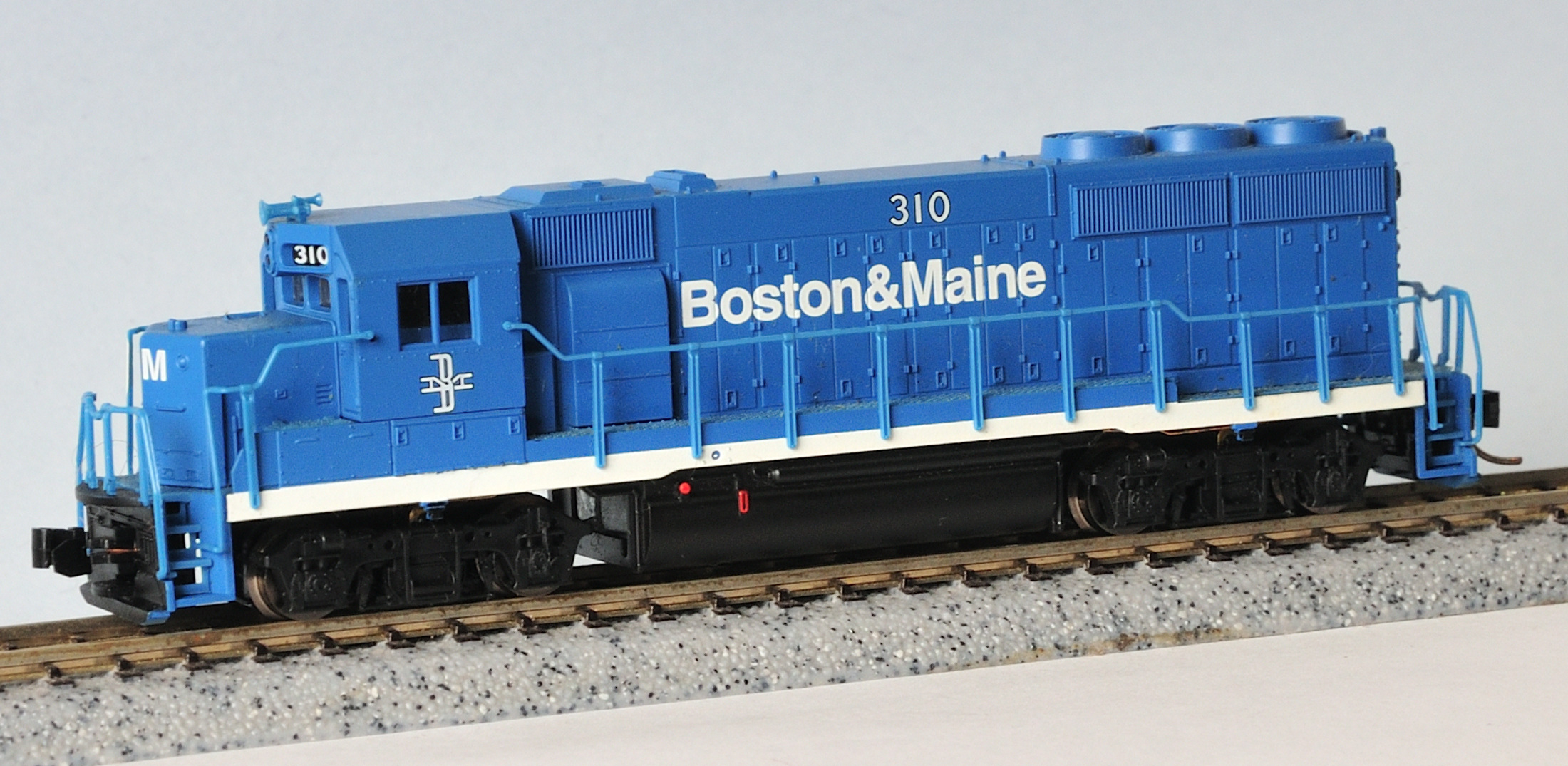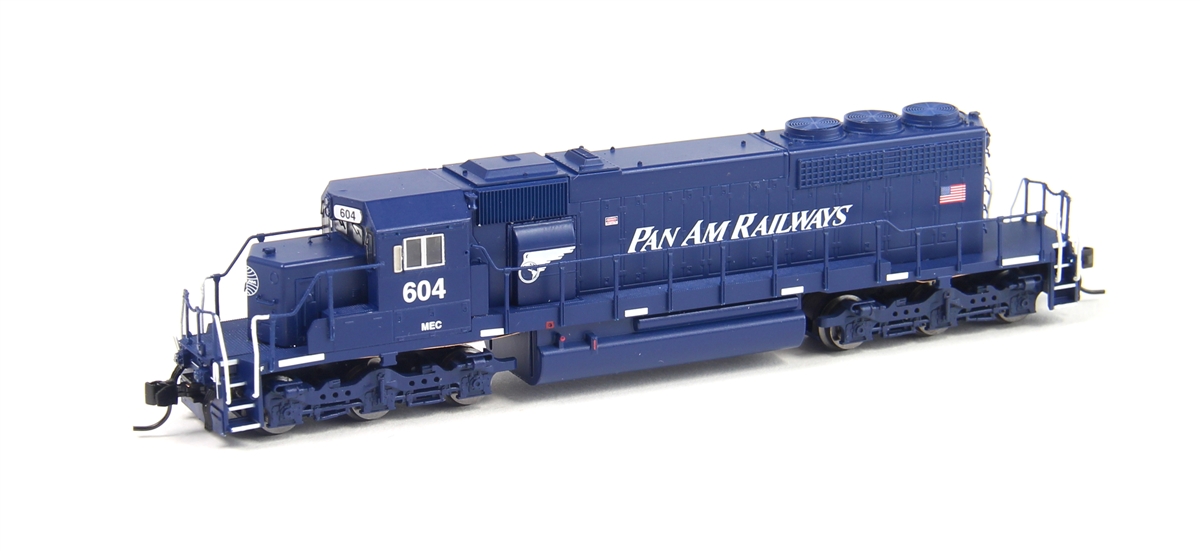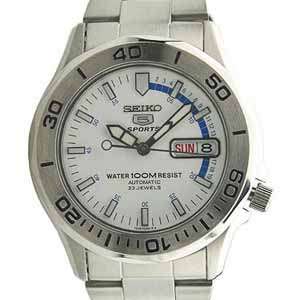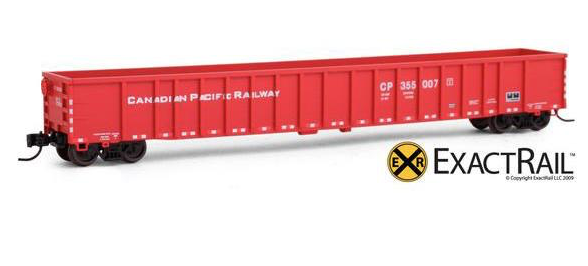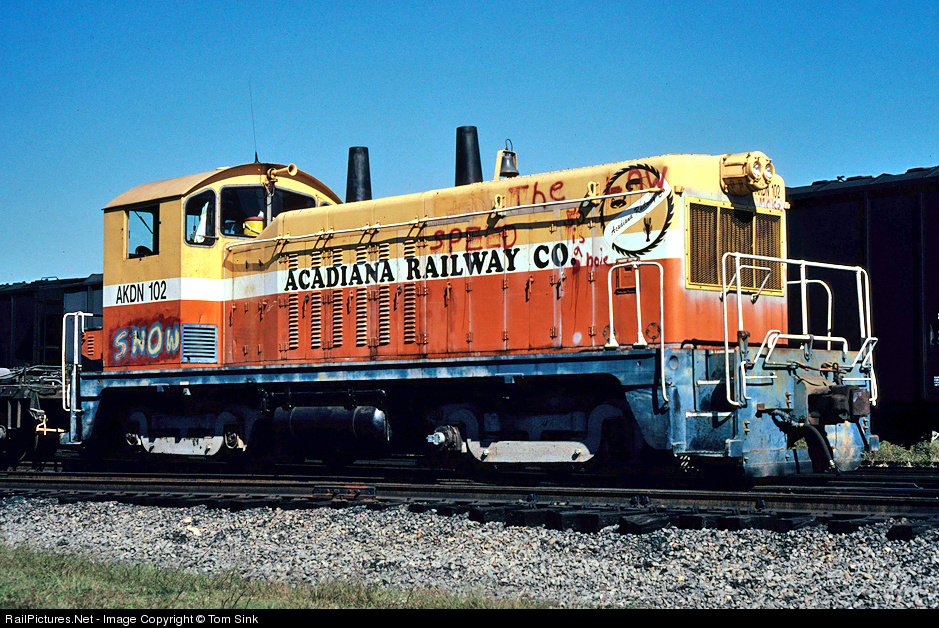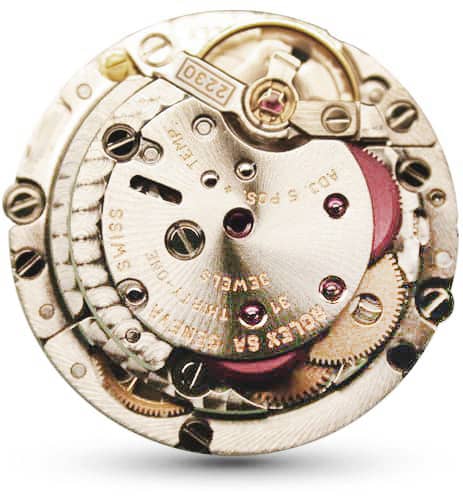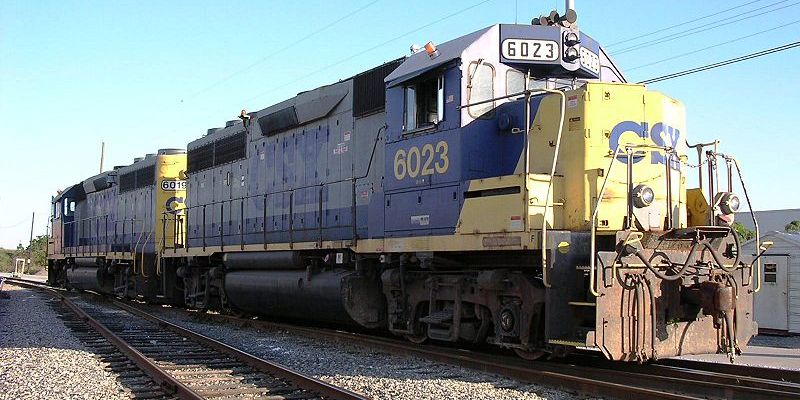Specific Item Information: No dynamic brakes
Model Information: This model was introduced in 1997 with a DCC-ready chassis, and was also offered with a pre-installed Lenz decoder.
The same mechanism is used for the GP38, GP38-2, GP40 and GP40-2 since 1997. The earlier version of 1996 of the GP-40 was not yet DCC-Ready.
All versions use a dual-flywheel, split frame chassis with a 5-Pole skew-wound motor.
The current model features:
The same mechanism is used for the GP38, GP38-2, GP40 and GP40-2 since 1997. The earlier version of 1996 of the GP-40 was not yet DCC-Ready.
All versions use a dual-flywheel, split frame chassis with a 5-Pole skew-wound motor.
The current model features:
- Golden-white LEDs;
- Separately-applied roof detail;
- Painted safety rails;
- Directional lighting;
- Blackened metal wheels;
- Scale Speed motor;
- Separately-applied coupler cut levers;
- Non-Dynamic, Dynamic, and Extended Range Dynamic Brakes used where appropriate;
- Pilot: Standard or with Snow Plow;
- Low short hood and High short hood versions available.
DCC Information: DCC-Ready model, accepting a 1 Amp N Scale Mobile Decoder for Atlas N-Scale GP40-2, U25B, SD35, Trainmaster, B23-7 and others (DN163A0) from digitrax.com.
Prototype History: The EMD GP40-2 is a 4-axle diesel road switcher locomotive built by General Motors Electro-Motive Division as part of its Dash 2 line between April 1972 and December 1986. The locomotive's power is provided by an EMD 645E3 16-cylinder engine which generates 3,000 horsepower (2.24 MW).
Standard GP40-2 production totalled 861 units, with 817 built for U.S. railroads, and 44 for Mexican railroads. In addition, three GP40P-2s, passenger versions of the GP40-2, were built for Southern Pacific in 1974, and 279 GP40-2L(W) and GP40-2(W) units, equipped with wide-nosed cabs, were built by General Motors Diesel (GMD), for Canadian National and GO Transit between 1974 and 1976. Of the CN units, 233 were built with a taller and lighter frame to allow for a larger fuel tank. These units were officially classified GP40-2L but are commonly referred to as GP40-2L(W). The balance of CN's fleet, 35 units, and the 11 unit GO Transit fleet, used standard frames and smaller fuel tanks; they are often referred to as GP40-2(W) but are classified as GP40-2. Total production of the GP40-2 and its variations totalled 1,143 units.
The external spotting differences between the GP40 and the GP40-2 are very minor, as the main improvements reside on the engine and electronic control. A noticeable one is the water-level sight gauge on the right (engineer) side below the first radiator fan.
Although the GP40-2 was a sales success, it sold fewer units than the earlier GP40 and the contemporary GP38-2 and SD40-2 models. The popularity of high-horsepower 4-axle diesels began to decline with the GP40-2, with 6-axle models gaining in popularity for their superior low-speed lugging performance
From Wikipedia
Standard GP40-2 production totalled 861 units, with 817 built for U.S. railroads, and 44 for Mexican railroads. In addition, three GP40P-2s, passenger versions of the GP40-2, were built for Southern Pacific in 1974, and 279 GP40-2L(W) and GP40-2(W) units, equipped with wide-nosed cabs, were built by General Motors Diesel (GMD), for Canadian National and GO Transit between 1974 and 1976. Of the CN units, 233 were built with a taller and lighter frame to allow for a larger fuel tank. These units were officially classified GP40-2L but are commonly referred to as GP40-2L(W). The balance of CN's fleet, 35 units, and the 11 unit GO Transit fleet, used standard frames and smaller fuel tanks; they are often referred to as GP40-2(W) but are classified as GP40-2. Total production of the GP40-2 and its variations totalled 1,143 units.
The external spotting differences between the GP40 and the GP40-2 are very minor, as the main improvements reside on the engine and electronic control. A noticeable one is the water-level sight gauge on the right (engineer) side below the first radiator fan.
Although the GP40-2 was a sales success, it sold fewer units than the earlier GP40 and the contemporary GP38-2 and SD40-2 models. The popularity of high-horsepower 4-axle diesels began to decline with the GP40-2, with 6-axle models gaining in popularity for their superior low-speed lugging performance
From Wikipedia
Road Name History: 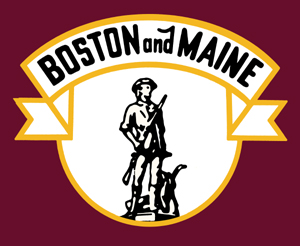 The Andover and Wilmington Railroad was incorporated March 15, 1833, to build a branch from the Boston and Lowell Railroad at Wilmington, Massachusetts, north to Andover, Massachusetts. The line opened to Andover on August 8, 1836. The name was changed to the Andover and Haverhill Railroad on April 18, 1837, reflecting plans to build further to Haverhill, Massachusetts (opened later that year), and yet further to Portland, Maine, with the renaming to the Boston and Portland Railroad on April 3, 1839, opening to the New Hampshire state line in 1840.
The Andover and Wilmington Railroad was incorporated March 15, 1833, to build a branch from the Boston and Lowell Railroad at Wilmington, Massachusetts, north to Andover, Massachusetts. The line opened to Andover on August 8, 1836. The name was changed to the Andover and Haverhill Railroad on April 18, 1837, reflecting plans to build further to Haverhill, Massachusetts (opened later that year), and yet further to Portland, Maine, with the renaming to the Boston and Portland Railroad on April 3, 1839, opening to the New Hampshire state line in 1840.
The Boston and Maine Railroad was chartered in New Hampshire on June 27, 1835, and the Maine, New Hampshire and Massachusetts Railroad was incorporated March 12, 1839, in Maine, both companies continuing the proposed line to South Berwick, Maine. The railroad opened in 1840 to Exeter, New Hampshire, and on January 1, 1842, the two companies merged with the Boston and Portland to form a new Boston and Maine Railroad.
The B&M flourished with the growth of New England's mill towns in the late 19th and early 20th centuries, but still faced financial struggles. It came under the control of J. P. Morgan and his New York, New Haven and Hartford Railroad around 1910, but anti-trust forces wrested control back. Later it faced heavy debt problems from track construction and from the cost of acquiring the Fitchburg Railroad, causing a reorganization in 1919.
By 1980, though still a sick company, the B&M started turning around thanks to aggressive marketing and its purchase of a cluster of branch lines in Connecticut. The addition of coal traffic and piggyback service also helped. In 1983 the B&M emerged from bankruptcy when it was purchased by Timothy Mellon's Guilford Transportation Industries for $24 million. This was the beginning of the end of the Boston & Maine corporate image, and the start of major changes, such as the labor issues which caused the strikes of 1986 and 1987, and drastic cost cutting such as the 1990 closure of B&M's Mechanicville, New York, site, the largest rail yard and shop facilities on the B&M system.
Guilford Rail System changed its name to Pan Am Railways in 2006. Technically, Boston & Maine Corporation still exists today but only as a non-operating ward of PAR. Boston & Maine owns the property (and also employs its own railroad police), while Springfield Terminal Railway, a B&M subsidiary, operates the trains and performs maintenance. This complicated operation is mainly due to more favorable labor agreements under Springfield Terminal's rules.
Read more on Wikipedia.

The Boston and Maine Railroad was chartered in New Hampshire on June 27, 1835, and the Maine, New Hampshire and Massachusetts Railroad was incorporated March 12, 1839, in Maine, both companies continuing the proposed line to South Berwick, Maine. The railroad opened in 1840 to Exeter, New Hampshire, and on January 1, 1842, the two companies merged with the Boston and Portland to form a new Boston and Maine Railroad.
The B&M flourished with the growth of New England's mill towns in the late 19th and early 20th centuries, but still faced financial struggles. It came under the control of J. P. Morgan and his New York, New Haven and Hartford Railroad around 1910, but anti-trust forces wrested control back. Later it faced heavy debt problems from track construction and from the cost of acquiring the Fitchburg Railroad, causing a reorganization in 1919.
By 1980, though still a sick company, the B&M started turning around thanks to aggressive marketing and its purchase of a cluster of branch lines in Connecticut. The addition of coal traffic and piggyback service also helped. In 1983 the B&M emerged from bankruptcy when it was purchased by Timothy Mellon's Guilford Transportation Industries for $24 million. This was the beginning of the end of the Boston & Maine corporate image, and the start of major changes, such as the labor issues which caused the strikes of 1986 and 1987, and drastic cost cutting such as the 1990 closure of B&M's Mechanicville, New York, site, the largest rail yard and shop facilities on the B&M system.
Guilford Rail System changed its name to Pan Am Railways in 2006. Technically, Boston & Maine Corporation still exists today but only as a non-operating ward of PAR. Boston & Maine owns the property (and also employs its own railroad police), while Springfield Terminal Railway, a B&M subsidiary, operates the trains and performs maintenance. This complicated operation is mainly due to more favorable labor agreements under Springfield Terminal's rules.
Read more on Wikipedia.
Brand/Importer Information: In 1924 Stephan Schaffan, Sr. founded the Atlas Tool Company in Newark, New Jersey. In 1933 his son, Stephan Schaffan, Jr., came to work for his father at the age of sixteen. Steve Jr. built model airplanes as a hobby and frequented a local hobby shop. Being an enterprising young man, he would often ask the owner if there was anything he could do to earn some extra spending money. Tired of listening to his requests, the hobby-store owner threw some model railroad track parts his way and said, "Here, see if you can improve on this".
In those days, railroad modelers had to assemble and build everything from scratch. Steve Jr. created a "switch kit" which sold so well, that the entire family worked on them in the basement at night, while doing business as usual in the machine shop during the day.
Subsequently, Steve Jr. engineered the stapling of rail to fiber track, along with inventing the first practical rail joiner and pre-assembled turnouts and flexible track. All of these products, and more, helped to popularize model railroading and assisted in the creation of a mass-market hobby. The budding entrepreneur quickly outgrew the limitations of a basement and small garage operation. Realizing they could actually make a living selling track and related products, Steve and his father had the first factory built in Hillside, New Jersey at 413 Florence Avenue in 1947. On September 30, 1949, the Atlas Tool Company was officially incorporated as a New Jersey company.
In 1985, Steve was honored posthumously for his inventions by the Model Railroad Industry Association and was inducted into the Model Railroad Industry Hall of Fame in Baltimore, Maryland. In addition, Steve was nominated and entered into the National Model Railroad Association Pioneers of Model Railroading in 1995.
In the early 1990s, the Atlas Tool Company changed its name to Atlas Model Railroad Company, Inc.
In those days, railroad modelers had to assemble and build everything from scratch. Steve Jr. created a "switch kit" which sold so well, that the entire family worked on them in the basement at night, while doing business as usual in the machine shop during the day.
Subsequently, Steve Jr. engineered the stapling of rail to fiber track, along with inventing the first practical rail joiner and pre-assembled turnouts and flexible track. All of these products, and more, helped to popularize model railroading and assisted in the creation of a mass-market hobby. The budding entrepreneur quickly outgrew the limitations of a basement and small garage operation. Realizing they could actually make a living selling track and related products, Steve and his father had the first factory built in Hillside, New Jersey at 413 Florence Avenue in 1947. On September 30, 1949, the Atlas Tool Company was officially incorporated as a New Jersey company.
In 1985, Steve was honored posthumously for his inventions by the Model Railroad Industry Association and was inducted into the Model Railroad Industry Hall of Fame in Baltimore, Maryland. In addition, Steve was nominated and entered into the National Model Railroad Association Pioneers of Model Railroading in 1995.
In the early 1990s, the Atlas Tool Company changed its name to Atlas Model Railroad Company, Inc.
Item created by: gdm on 2015-12-03 17:40:31. Last edited by gdm on 2023-02-05 16:28:22
If you see errors or missing data in this entry, please feel free to log in and edit it. Anyone with a Gmail account can log in instantly.
If you see errors or missing data in this entry, please feel free to log in and edit it. Anyone with a Gmail account can log in instantly.


